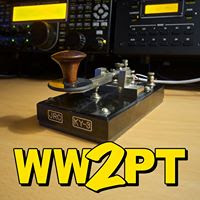Astronomiæ Instauratæ Mechanica
I've grown increasingly interested in the history of astronomy in recent years, and I have a particular admiration for Tycho Brahe, the father of modern observational astronomy (from whom I unceremoniously lifted the name for this blog). Thus, I was pleased to discover this excellent site dedicated to the instruments I've read so much about in books and articles. The site features a full digital facsimile of Astronomiæ Instauratæ Mechanica, Tycho's own descriptions (with English translations) of the numerous quadrants, sextants and other pre-telescopic instruments he used to chart the heavens.
In Astronomiæ Instauratæ Mechanica, Tycho also wrote in detail about his Uraniborg observatory, as well as the topography of the island of Hven on which it was located.The aim of this project is to exhibit the astronomical inventions of Tycho Brahe, especially the instruments through which the stars and planets could be observed and by which distances and ascensions could be measured.
There are three types of instruments: 1. quadrants and sextants used for determining altitudes and azimuths; 2. armillary instruments for measuring right ascensions and declinations, or longitudes and latitudes with respect to the ecliptic; and 3. instruments designed for the determination of angular distances between celestial bodies (sextants and the bipartite arc).
The instruments of Tycho Brahe represent a major achievement in astronomical science, because they provided much more accurate readings than previously possible, and on the basis of Tycho Brahe's observations Kepler determined the laws of planetary motions and from these laws Newton discovered the law of gravity. Not until the invention of the telescope some years after Tycho Brahe's death was it possible to get more accurate readings.
 Kitty Ferguson's "Tycho & Kepler: The Unlikely Partnership That Forever Changed Our Understanding Of The Heavens" is an excellent account of the lives of the two most important figures in astronomy in the late 16th and early 17th centuries, how the crossing of their paths led to the first true scientific validation of the heliocentric system and changed forever the way man would look at the universe.
Kitty Ferguson's "Tycho & Kepler: The Unlikely Partnership That Forever Changed Our Understanding Of The Heavens" is an excellent account of the lives of the two most important figures in astronomy in the late 16th and early 17th centuries, how the crossing of their paths led to the first true scientific validation of the heliocentric system and changed forever the way man would look at the universe.Other Tycho Resources:







<< Home